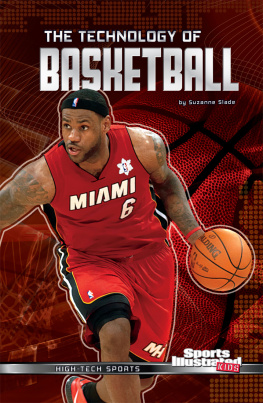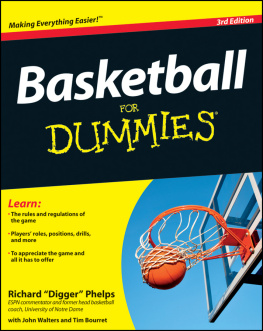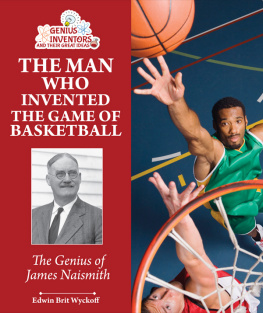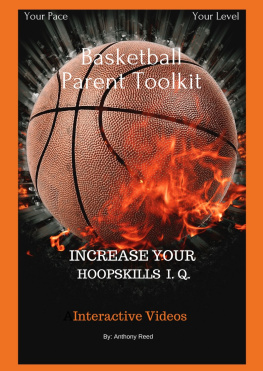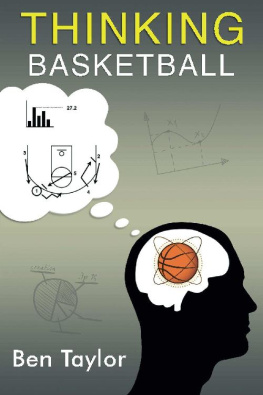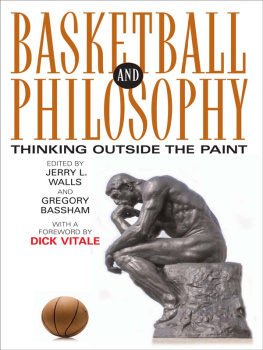Contents
Guide
Page List
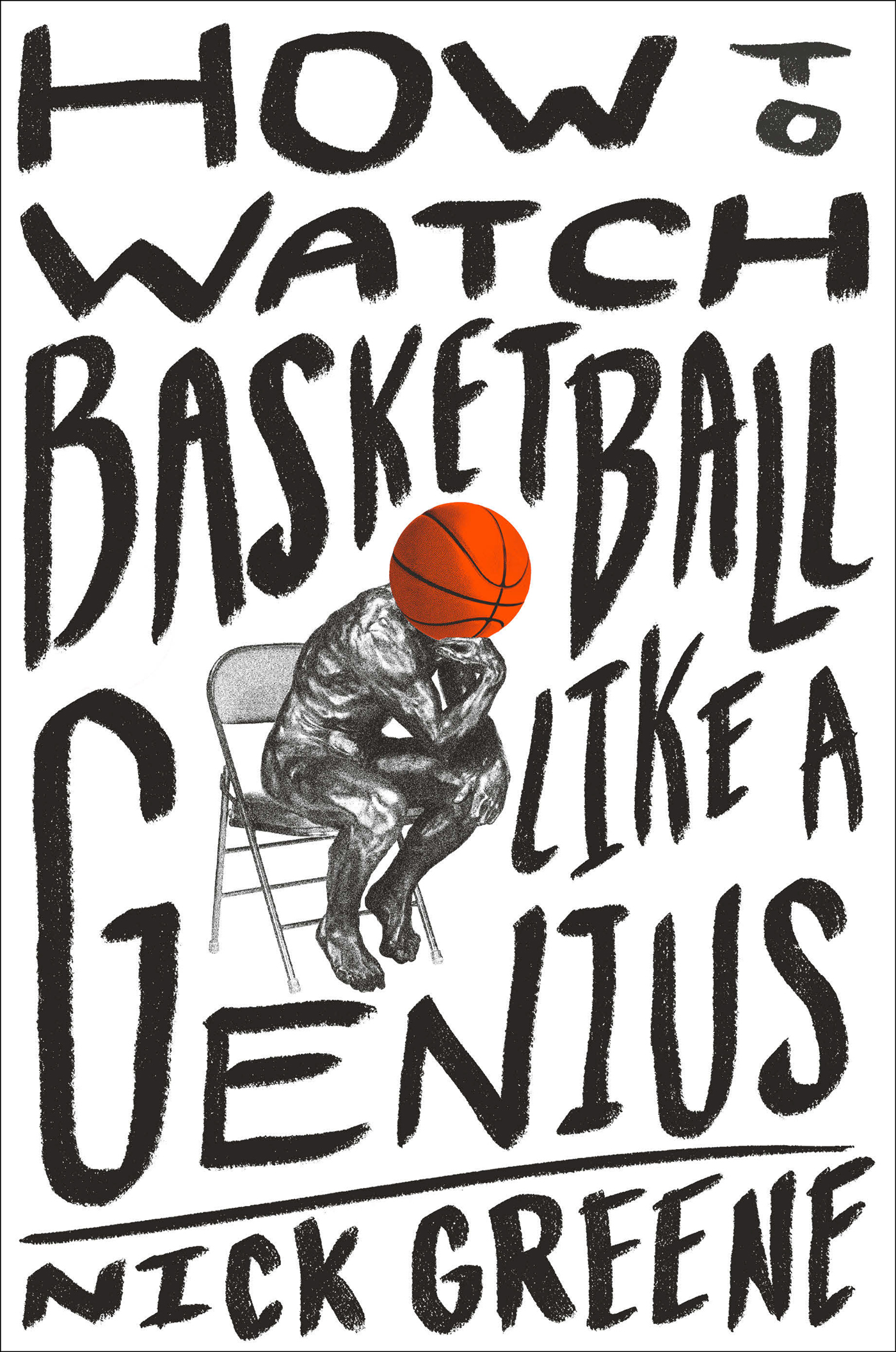

Text copyright 2021 Nick Greene
Illustrations copyright 2021 J.O. Applegate
Cover 2021 Abrams
Published in 2021 by Abrams Press, an imprint of ABRAMS. All rights reserved. No portion of this book may be reproduced, stored in a retrieval system, or transmitted in any form or by any means, mechanical, electronic, photocopying, recording, or otherwise, without written permission from the publisher.
Library of Congress Control Number: 2020944848
ISBN: 978-1-4197-4480-8
eISBN: 978-1-68335-920-3
Abrams books are available at special discounts when purchased in quantity for premiums and promotions as well as fundraising or educational use. Special editions can also be created to specification. For details, contact specialsales@abramsbooks.com or the address below.
Abrams Press is a registered trademark of Harry N. Abrams, Inc.

ABRAMS The Art of Books
195 Broadway, New York, NY 10007
abramsbooks.com
For Laura
Prologue
It comes in peace
An Introductory Class
Naismiths original thirteen rules for basketball
Making a Bad Rule Disappear
Dribblings outlaw illusionists
Counting Down the Seconds
Saving a sport in the nick of time
Youve Got to Draw the Line Somewhere
The delayed insurgency of the three-pointer
The Cost of Free Throws
Loneliness at the line
Jumping Past Conclusions
Breaking the surly bonds of bad coaching
Dawn of Flight
Dreaming about dunking
Stout, Resolute, and Somewhat Invisible
Defense flies under the radar
A Passing Interest in Assists
The selflessness and selfishness of sharing
The Phenomenal Shape of Chemistry
When things work
Epilogue
Bouncing back
PROLOGUE
It comes in peace
In July 2020, the New York Times published a report suggesting the United States military is in possession of alien technologies, including materials retrieved from UFO crash sites. An astrophysicist working with the Pentagon went on record and said that he had issued a classified briefing in March, asserting the recovered materials were from off-world vehicles not made on this earth. You may have missed this story about a potential interplanetary Cold War. I know I did. It came out in the middle of a summer beset by plague and chaos and got lost in the shuffle. America was exhausted. The aliens would have to check back in with us later.
The Times published a short follow-up piece, essentially to say, We cant believe we have to reiterate the alien news to you people. It didnt contain much new info, but the reporters further explained their sourcing: Numerous associates of the Pentagon program, with high security clearances and decades of involvement with official UFO investigations, told us they were convinced such crashes have occurred, based on their access to classified information. But the retrieved materials themselves, and any data about them, are completely off-limits to anyone without clearances and a need to know.
How, exactly, do they decide who gets to take a gander at this alien junk? Im not talking about security clearances, but rather the specific kinds of expertise deemed appropriate to the task of combing through the detritus of an extraterrestrial crash site. Physicists and materials scientists are obvious and necessary participants, as they are prepared to analyze the alloys or polymers or whatever this stuff may be, but the mystery goes beyond simply identifying properties of matter. As a species, we are very new to this sort of thing. Id hate to see us limit our options.
What if the aliens were moving to a new planet when an armoire fell out of their spacecraft and tumbled to Earth? Maybe a glowing heap at a crash site is actually a pile of otherworldly pants and overalls, but we have no clue because the military didnt ask a fashion designer or textile manufacturer to weigh in with their thoughts. Are the Pentagons astrophysicists prepared to identify a pair of jaunty culottes? This is a legitimate concern.
Think for a moment about the reverse scenario. Humans havent sent any physical objects far enough to realistically believe that theyll bump into the home planets of other intelligent beings, but our radio and television signals travel at high enough speeds to reach thousands of nearby star systems. It is a very real possibility that aliens living light-years away are just starting to enjoy our old programming. They might be tuning into Game 7 of the 1984 NBA Finals as you read this.
How would those extraterrestrials approach basketball? Barring the extreme cosmic coincidence that they developed an identical version of the sport independently and without our influence, the aliens wouldnt have any hoops analysts or former players to help explain whats happening. Theyd be forced to formulate their budding expertise regarding crossovers, reverse layups, and three-pointers on observation alone. I hope the alien powers that be let everyone, and not just their most esteemed scientists, watch hoops. The game was designed to be enjoyed by all.
Basketball is a relatively recent invention. It didnt crash-land on Earth until the late nineteenth century, and it didnt arrive fully formed. The sport has undergone constant changes throughout its brief life, many of which were thought up by people who could not be described as basketball experts. (Especially in its early days, when that distinction did not yet exist.) Despite its ever-evolving form, there remains a unique pull to the game that transcends routine fandom. Much like the Beatles discography or Sandra Bullocks performance in Speed, basketball is maximally appealing to a staggeringly large audience. Its as if were preconditioned in the womb to embrace it. While I cant remember the first time I saw the game being played, I am confident that my underdeveloped cerebral cortex responded, warmly: This must be basketball. Its rather nice.
I live in the Bay Area, which was the center of the basketball universe for the better part of a decade thanks to the success of the Golden State Warriors. Naturally, all anyone wants to talk about is basketball. I tend to cover sports for work, but Ive long balanced that beat with writing on a whole slew of topics. As a result, I have found myself discussing hoops with concert harpists, cat behaviorists, and plasma physicists. I initially considered this to be small talkcommon ground to explore before we got to the nitty-gritty of their respective fieldsbut it quickly became apparent that, if they had their druthers, wed spend hours talking about Steph Curry.
These are people who dont think like the athletes playing the sport or like the writers covering it. For example, a wine critic once told me she thought that noted oenophile LeBron James would make a good vineyard owner because hes a multitasker who prefers to delegate on the fly, and that his history with erratic teammates like J. R. Smith would come in handy when harvesting in unpredictable weather. This hypothetical vineyard stewardship was some of the most apt analysis Ive encountered in all my years following basketball. Score one for viticulture.


